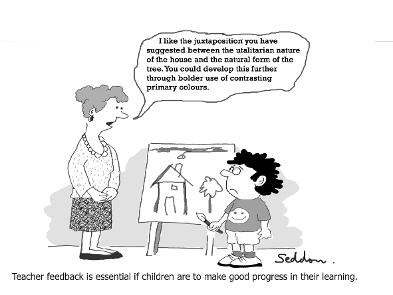Recently Chis Ulmer, a Florida teacher, hit national news and Facebook viral status with his unorthodox daily start to his Special Education Classroom. In an effort to let his students know how special they are, he begins each class giving a compliment to them individually. “They’re the most human people I know, so I make time each morning to just hang out with them like I do with my own friends,” Ulmer said.
While praise may sound like it could never have a negative affect on a child, it does have its critics. Eddie Brummelman, whose doctoral work on the subject was recently published in Psychological Science and highlighted by Huffington post in their article “The Over-Praise Dilemma”, describes the challenge is in providing praise which is detailed and authentic enough to not feel artificial to the student. His work entitled “That’s Not Just Beautiful–That’s Incredibly Beautiful!”, focuses on what he describes as “inflated praise”. While it is common to hear teachers and parents use superlative phrases with students and children, he cautions that kids are smart enough to know that every drawing they create is not “incredible” or “fantastic”. This can have two possible affects. Either the student perceives the compliment as disgenuine and will start to question the authenticity of the future praise you give or they will begin to distrust their own interpretation of their work and become more dependent upon external feedback.

So what is the solution?
In her book Talking to Tweens: Getting It Right Before It Gets Rocky with Your 8- to 12-Year-Old Elizabeth Hartley-Brewer also consuls adults on the best way to “get it right before it gets rocky”. Her best advice, Increase your vocabulary.
“Good is such a bad word,” Hartley-Brewer says, “when it comes to ensuring that praise is effective. It is bad because it is inadequate; it says so little.” Consider banishing the words “good” and “bad” from your classroom vocabulary. After all, what clues do the words give about what was done correctly, or poorly? Instead, try using description— a “well-argued” paper, an “insightful” poem, or a “beautifully drawn” map. If you stick to this rule in your class, you’ll start to notice that your students pick up on it, too, and become better at handing out their own compliments and criticisms. (Hartley-Brewer, 2005)
In essence, use BSP – Behavior Specific Praise Statements.
| General Praise | Behavior Specific Praise |
| Good Work | I appreciate the effort you put into this assignment to complete it to the best of your ability. |
| Nice Project | The project shows you really understand and could communicate the ideas to me from this unit. |
| How Pretty | Just by the way you presented your information, I can tell you took pride in the project and your learning. |
| Good Conclusion | Your conclusion shows you were able to combine your claim and evidence to really support your reasoning. |
| Correct | Completing this correctly shows me you know the steps in this process and have mastered the ability to carry it out! |
As a busy teacher, I know you may be thinking that sometimes it is overwhelming to even give students a “good” on a paper or a “nice work” during class. While approaching the transition to BSP, you also have to be realistic. Instead of trying an “all or nothing” approach, try giving one or two students BSP statements daily, either verbally or in written feedback on an assignment.
Research by Moffat (2011) also tells us the use of “BSP statements resulted in a decrease in aggressive behaviours and an increase in pro-social behaviours for the student” (page 56). So it may be an interesting idea to start using BSP with some of the more aggressive and challenging students first.
We also have to be careful that the praise we give is age appropriate. I love this cartoon because it reminds me that “good” is not always a “bad” word.
Regardless of the praise you give and how it is worded, the important part is that we all continue to encourage students and children who are making positive contributions to keep on the path to success.
Chris Ulmer has found what is working for him in his class. Do you have a system or idea that works for you? Comment below and tell us all about it!
References:
Brewer, E. (2005). Talking to tweens: Getting it right before it gets rocky with your 8- to 12-year-old (North American ed.). Cambridge, MA: Da Capo Life Long.
Brummelman, E., Thomaes, S., Castro, B., Overbeek, G., & Bushman, B. (2014). “That’s Not Just Beautiful–That’s Incredibly Beautiful!”: The Adverse Impact of Inflated Praise on Children With Low Self-Esteem.Psychological Science, 728-735.
Moffat, T. K. (2011) Increasing the Teacher Rate of Behaviour Specific Praise and its Effect on a Child with Aggressive Behaviour Problems. KAIRARANGA – VOLUME 12, ISSUE 1: 2011
Richards, E. (2006) The subtle art of bringing out the best in every student. Instructor August 2006 pages 33-35




Hola y gracias por este blog es una verdadera inspiración ..